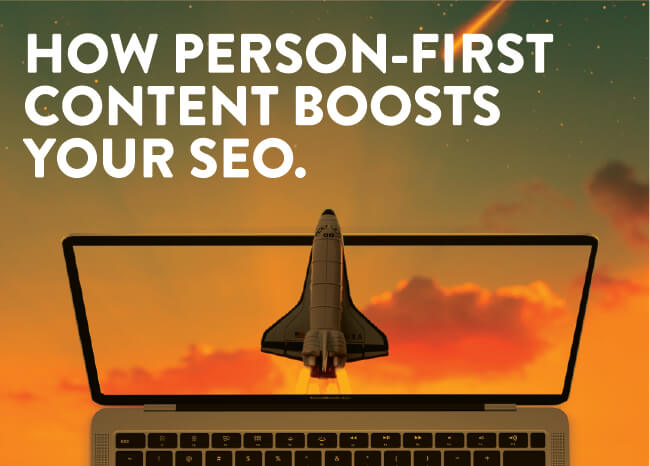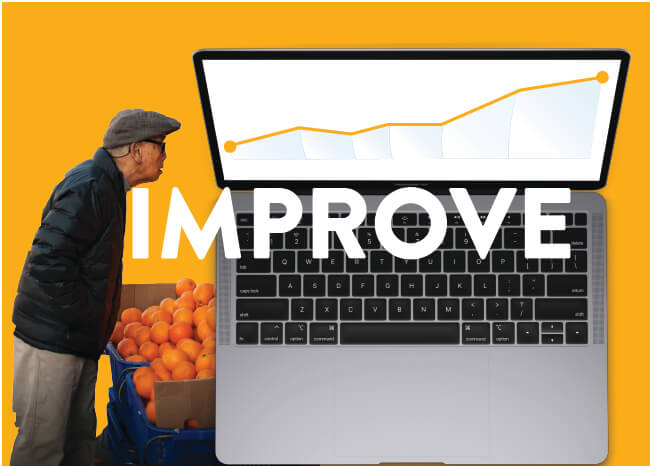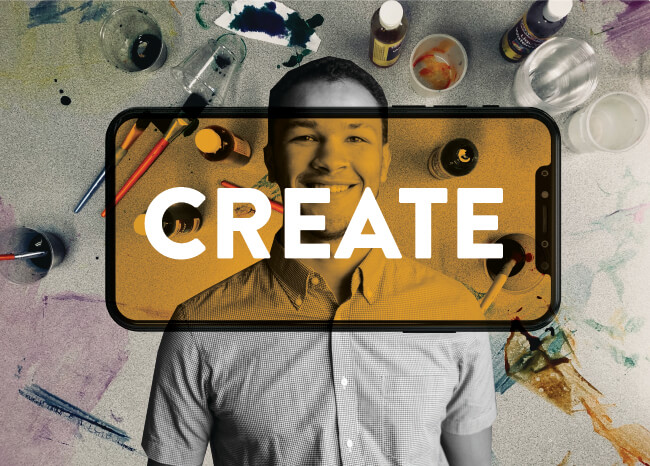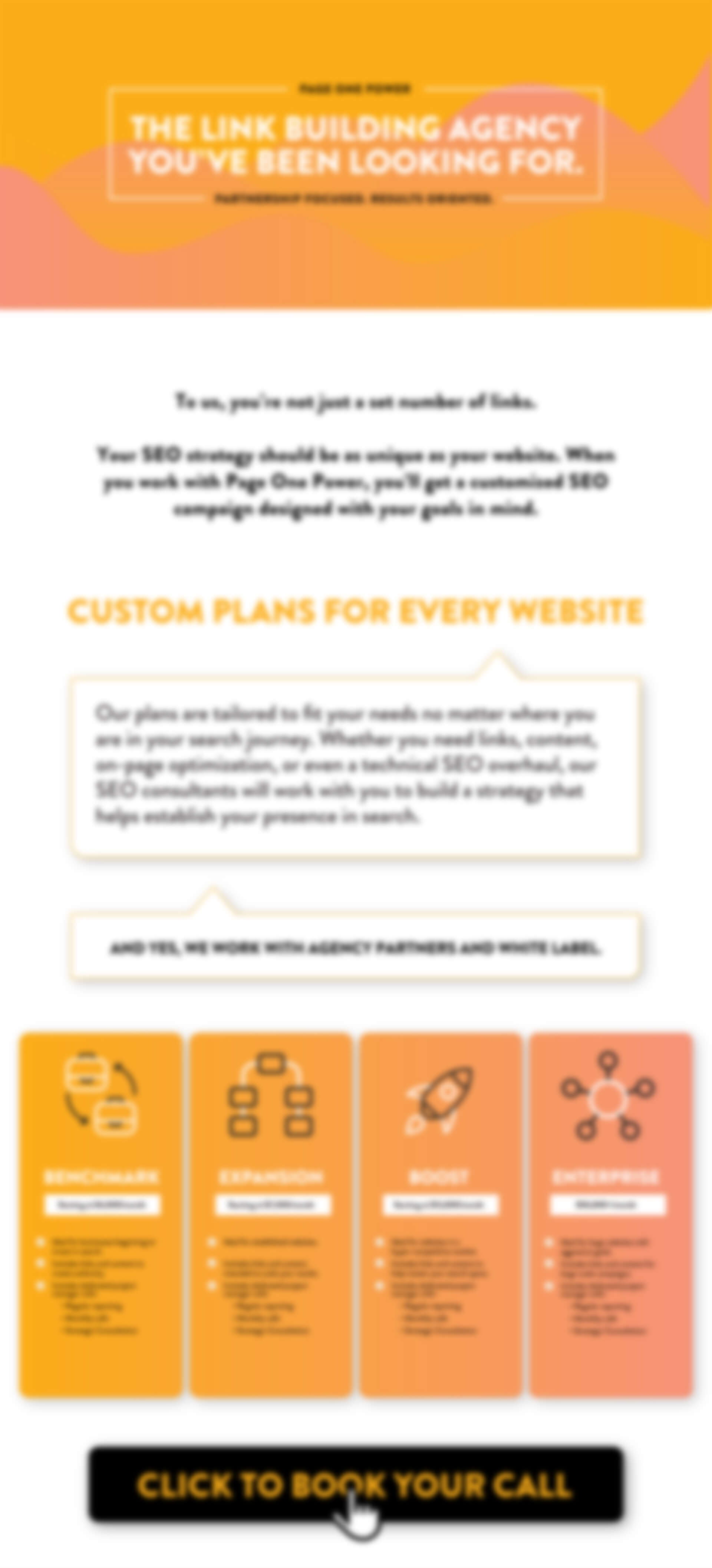
Call me a broken record, but I can’t stop talking about the power of person-first content. As a copyeditor and a content consumer, I spend an inordinate amount of time reading. When I see a piece — a blog post, article, tutorial — that cuts through the glut of mediocrity online, it’s like watching an Olympic athlete compete with every ounce of heart and soul in their being. You learn who that athlete is and what they value just by watching them. Even if they don’t take home a medal, you don’t forget the human being you saw on the screen
In both the Olympics and content marketing, memorability is key. Approaching your website’s blog posts, articles, and tutorials with the reader in mind is just as important as any other branding and marketing you could do — if not more so.
Every internet user is a searcher, and searcher intent dominates the world of SEO. Interestingly enough, when you prioritize a person-first approach, you can even go beyond the world of SEO into a world of shared emotions, like curiosity and satisfaction, that drive the human experience.
Although it’s easy to talk about creating person-first, searcher-friendly content, but what does it actually mean? Turns out there are some very specific things you can do once you know what defines the person-first approach.
What Is Person-first Content?
Broadly speaking, person-first content is any sort of content that attends first and foremost to what people care about. If I was talking about movies or novels, I’d be talking about the paradox at the heart of human existence. I’d be talking about love. I’d also be talking about visceral emotions such as when you feel surprised.
But I’m talking about web content, and thankfully your brand doesn’t have to be Steven Spielberg to make people happy. Person-first content:
- Satisfies searcher intent;
- Is accessible to all readers and consumers;
- Is structured, written, formatted in such a way as to make consumption seem effortless;
- Does not alienate anybody;
- Is empathetic.
On the internet, people care about information, but they also care about entertainment. A great many people care about inspiration as well. I recently saw a blog post on an eye-care site about why onions make you cry when you cut into one. This is something almost everyone can identify with.
The author set up their own entertaining experiment to see which method made them cry the least. I gleaned some super-specific scientific info, some actionable info, and I kid you not, I was inspired to cook with onions afterward, just so I could use the recommended method and cut one without crying.
Surprise! It’s a trending post for the eye-care site.
How Does Person-first Content Improve SEO?
When it comes down to it, search engine optimization is about two things: serving up content that draws attention from people, and satisfying the demands of search engines.
In the latter case, SEO experts typically focus on Google; in the former, we often start with keywords that people use. As it turns out, person-first content doesn’t just check all the boxes — it’s the all-star of both SEO facets. Since we’re on the topic of putting people first, let’s cover the ways person-first content helps the searchers themselves.
Optimizes Your Site’s Keyword Coverage
Wait a minute, you say, isn’t keyword content an outdated, search-engine-bot-centered approach? Where are the humans here?
Ultimately, the humans enter the queries that become keywords. The outdated, money-first approach is to target only high-volume, big-money keywords. For most, the assumption is to focus on these big keywords related to their niche. Theoretically, they should be able to pound away at creating content that targets high-volume keywords, right?
Wrong. This approach is outdated because it ignores the individuals who are out there entering long-tail keywords and other information-seeking queries. Returning to the earlier example, the query “why do onions make you cry” isn’t necessarily going to sell eyewear. But it does help a person understand something (a literal pain point, in the case of onions) that’s bothering them.
Over time, as you address more information-seeking queries in an attempt to help people first, your breadth of keyword coverage translates into authority, which can earn you higher rankings for your biggest keywords.
Drives You to Prioritize User Experience (UX)
Page experience is now a ranking factor for Google. And when you create person-first content, you prioritize UX, which means users will have a quality page experience.
With its page experience update, Google is looking for your website’s pages to satisfy its Core Web Vitals. These Vitals include visual stability, loading time, and interactivity. Not many people want to be bombarded with dynamic third-party ads, instant-play videos, and other interruptions that change the visual stability of a page. Nor do they want a slow-loading page. They want content they can interact with in real-time.
Your person-first pages are going to satisfy all of Google’s Core Web Vitals because you’re looking to communicate with the user directly and in-depth. This means no sales-gimmick interruptions. You want the user to be able to dive in and get what they want out of the page.
Motivates You to Consistently Create Good Content
As you continue to put yourself in the searcher’s shoes, you develop consistency with your content creation. You’re addressing long-tail queries. You’re creating blog posts, videos, long-form content, and white papers that go the distance to answer queries. You’re throwing creativity into the mix, and practice makes you better.
Here’s where the next piece of the SEO puzzle falls into place. Good content that fascinates readers is linkable content. This is the person-first content just about any person wants to consume. It all depends on what interests them today.
Backlinks — links from other sites — are one of Google’s main ranking factors. But the search engine isn’t just looking for any old backlinks. You need organic links that aren’t created to manipulate the system. The way to earn these links is to consistently create person-first content. Since people can use this content for informational purposes, they’re more likely to link to it from their website.
How To Create Person-first Content
Just like an onion, there are plenty of layers to person-first content. As mentioned earlier, one of the most sure-fire ways to help people out is to start with accessibility.
Prioritize Accessibility
Web content accessibility is a major part of UX and you’re legally required to make your site accessible under the Americans with Disabilities Act. When it comes to creating content, there are ways that you can help everyone, including individuals with disabilities, access the information:
- Format with screen readers in mind: Place semicolons or periods at the end of list items so that the screen reader doesn’t read your entire list as one sentence. Make link anchor text easy to understand out of context. Consider having a screen reader go over your content to check accessibility before you post.
- Automatically include captions in videos: Individuals with hearing impairment should be able to easily understand what’s going on.
- Use image alt text: Write a description of each image on the page for those using screen readers.
Furthermore, use headings, subheadings, and bold lists to make your text scannable. Consider using block quotes for key bits of info. This will improve accessibility for absolutely anyone who needs to skim your content for information.
Be Empathetic
Since being empathetic with your content may be unquantifiable, this piece of advice may be difficult to put into practice from a practical perspective. Yet all you have to do is think from the perspective of the searcher. Step back from your familiarity with your niche and look at it with a fresh set of eyes. Consider the following when you’re creating empathetic content:
- Who is the consumer, reader, or content user? Knowing your audience enables you to get in their shoes.
- What are the user’s pain points? Each user has their “why” — their reasons for accessing a page of content; the better you understand these reasons why, the more helpful the content.
- How much information do they need to fully satisfy their query? Think about what you would want to know if you had a query and weren’t just looking for a stock answer. It’s important to have a stable of long-form articles because some people really do want to dive deep into a subject. Yet at the same time, don’t tack on more words and information than necessary.
- What will make your content easily digestible for a broad audience? If there’s one thing we can all empathize with, it’s that feeling of simply wanting to drop in, grab a takeaway, and move on.
The importance of this last point can’t be stressed enough. Even when content is long-form, add those formatting elements we talked about at the end of the accessibility section above. Furthermore, since headings and subheadings often represent search queries, do your best to address these queries and give answers at the beginning of each section.
Be Inclusive
“Inclusivity” is the golden rule wrapped up in a single word. How do you want to be treated when you’re online? An inclusive approach to content asks you to respect all people.
It’s pretty tough to imagine any brand setting out to disrespect anyone. But there are times when even the best content creator simply doesn’t put in the effort to figure out exactly how they should refer to somebody. It’s a shame because inclusivity is more important than deadlines. Here’s what you can do:
- Research categorical and intersectional identifiers: Look to an author or group that is an authority among the people to whom you’re referring. This could be a blogger, a nonprofit organization, or an activist. How does an author who is also indigenous, for example, refer to themselves and others who are of the same ethnicity? If they want others to refer to them that way, do so in your content.
- Use pronouns wisely: “They” is becoming a popular pronoun because writers don’t always know a person’s preference. When in doubt, use “they” instead of “he” or “she.” If you’re talking about a hypothetical person and an instance comes up where you must use a gendered pronoun, prefer “she.”
- Avoid the language of victimization: You’re not “struggling with, suffering from, or a victim of” something. You’re a “survivor of trauma”; you’re “living with pain”; you’re “an individual with a disability”; you were “diagnosed with schizophrenia”; you’re “being treated for post-traumatic stress disorder.”
- Don’t be “woke” — focus on others: The word “woke” has become the center of a heated debate, but here’s the deal — when a brand is thinking about whether it’s presenting a woke image, the group of people behind that brand are probably not thinking about anything but the brand’s image. The point is, you’re not being inclusive because you’re engaging in a form of branded virtue-signaling. You’re being compassionate to other people.
- Always look for updated and authentic information: Identifiers are a moving target because people aren’t static. The more recent your reference point, the better. Perhaps more importantly, make sure your source of info is an authentic person and not an author whose identity is unconfirmed.
Inclusivity can be difficult because everybody can have a hard time using the right words in a constantly evolving situation. Your intent is your guiding light. The good faith and hard work you put into including all people with your words will shine when people read your content.
Eliminate Incomprehensible Language
Whether it’s biz-speak, jargon, or passive-voice sentences that are difficult to unravel, if the reader can’t get anything out of it, throw it out. You’ll know this stuff when you see it. As you read the text, your brain fogs over. Edit for clarity and make sure phrases and sentences aren’t vapid fluff.
The Takeaway
Person-first content is exciting. The more time you spend in content marketing and SEO, the more you realize a boiler-plate, autopilot approach to content is boring. With person-first content, you’re thinking ahead. You know that not all people want to read a blog post, so you put together a podcast. You know a ton of people prefer visual content, so you create videos. You know there’s a person behind each search query, so you strive to understand what that person needs.
We humans are finicky, temperamental, inquisitive beasts. Perhaps that’s what’s so exciting about person-first content: in a world full of complex people weaving a complicated web of emotions, each piece of person-centered content is a mirror image of the complex person who created it.





